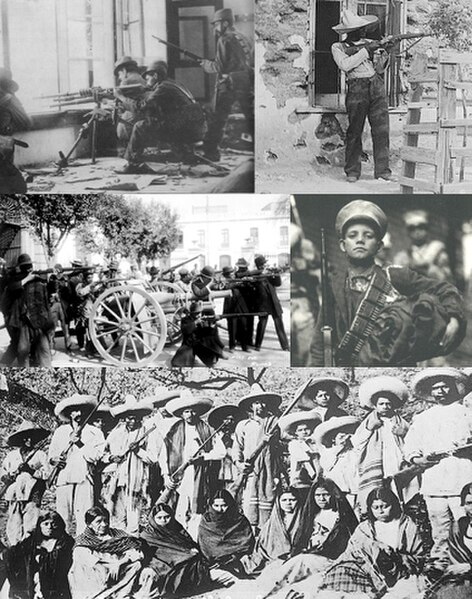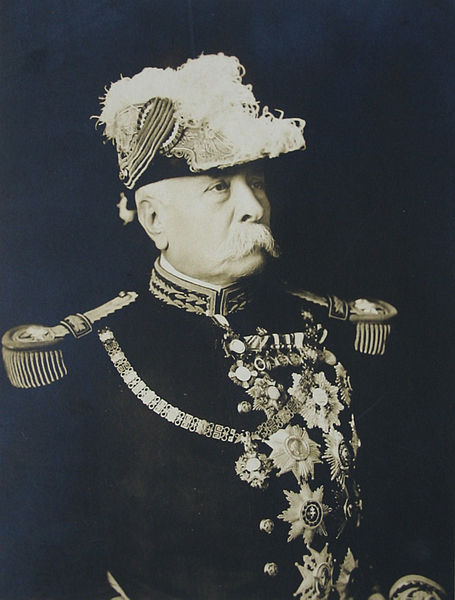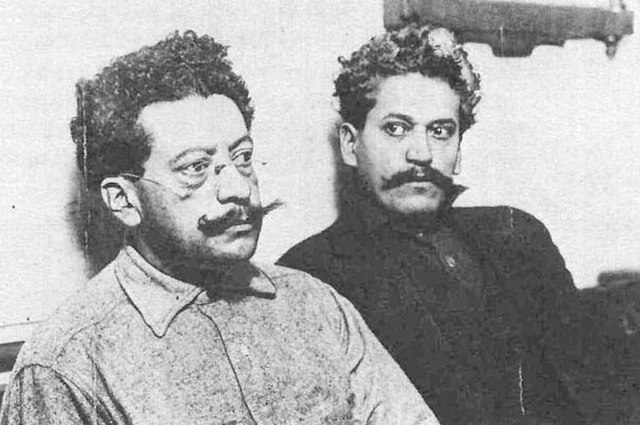Francisco "Pancho" Villa was a Mexican revolutionary and general in the Mexican Revolution. He was a key figure in the revolutionary movement that forced out President Porfirio Díaz and brought Francisco I. Madero to power in 1911. When Madero was ousted by a coup led by General Victoriano Huerta in February 1913, Villa joined the anti-Huerta forces in the Constitutionalist Army led by Venustiano Carranza. After the defeat and exile of Huerta in July 1914, Villa broke with Carranza. Villa dominated the meeting of revolutionary generals that excluded Carranza and helped create a coalition government. Emiliano Zapata and Villa became formal allies in this period. Like Zapata, Villa was strongly in favor of land reform, but did not implement it when he had power. At the height of his power and popularity in late 1914 and early 1915, the U.S. considered recognizing Villa as Mexico's legitimate authority.
Pancho Villa on horseback c. 1908–1919
General Pancho Villa, 1910.
Villa as he appeared in the United States press during the Revolution
General Pascual Orozco and Colonels Oscar Braniff, Pancho Villa and Peppino Garibaldi, photographed 10 May 1911, after taking Juárez City, during the Mexican Revolution.
The Mexican Revolution was an extended sequence of armed regional conflicts in Mexico from 20 November 1910 to 1 December 1920. It has been called "the defining event of modern Mexican history" and resulted in the destruction of the Federal Army, its replacement by a revolutionary army, and the transformation of Mexican culture and government. The northern Constitutionalist faction prevailed on the battlefield and drafted the present-day Constitution of Mexico, which aimed to create a strong central government. Revolutionary generals held power from 1920 to 1940. The revolutionary conflict was primarily a civil war, but foreign powers, having important economic and strategic interests in Mexico, figured in the outcome of Mexico's power struggles; the U.S. involvement was particularly high. The conflict led to the deaths of around one million people, mostly noncombatants.

From left to right and top to bottom: Huertista troops insurging against President Francisco Madero, Ten Tragic Days, 1913 Questionable photograph, may come from a 1930s film or be a period production Defense of the government by supporters of Madero, Ten Tragic Days, 1913, Mexico City El Niño artillero (Antonio Gómez Delgado), 10 years old, enlisted on July 2, 1910 in Acatzingán, Michoacán, part of the federal troops commanded by Victoriano Huerta
General Porfirio Díaz, President of Mexico
A banner (1903) at the office of opposition magazine El hijo del Ahuizote reads: "The Constitution has died..." (La Constitución ha muerto...)
Ricardo Flores Magón (left) and Enrique Flores Magón (right), leaders of the Mexican Liberal Party in jail in the Los Angeles (CA) County Jail, 1917








